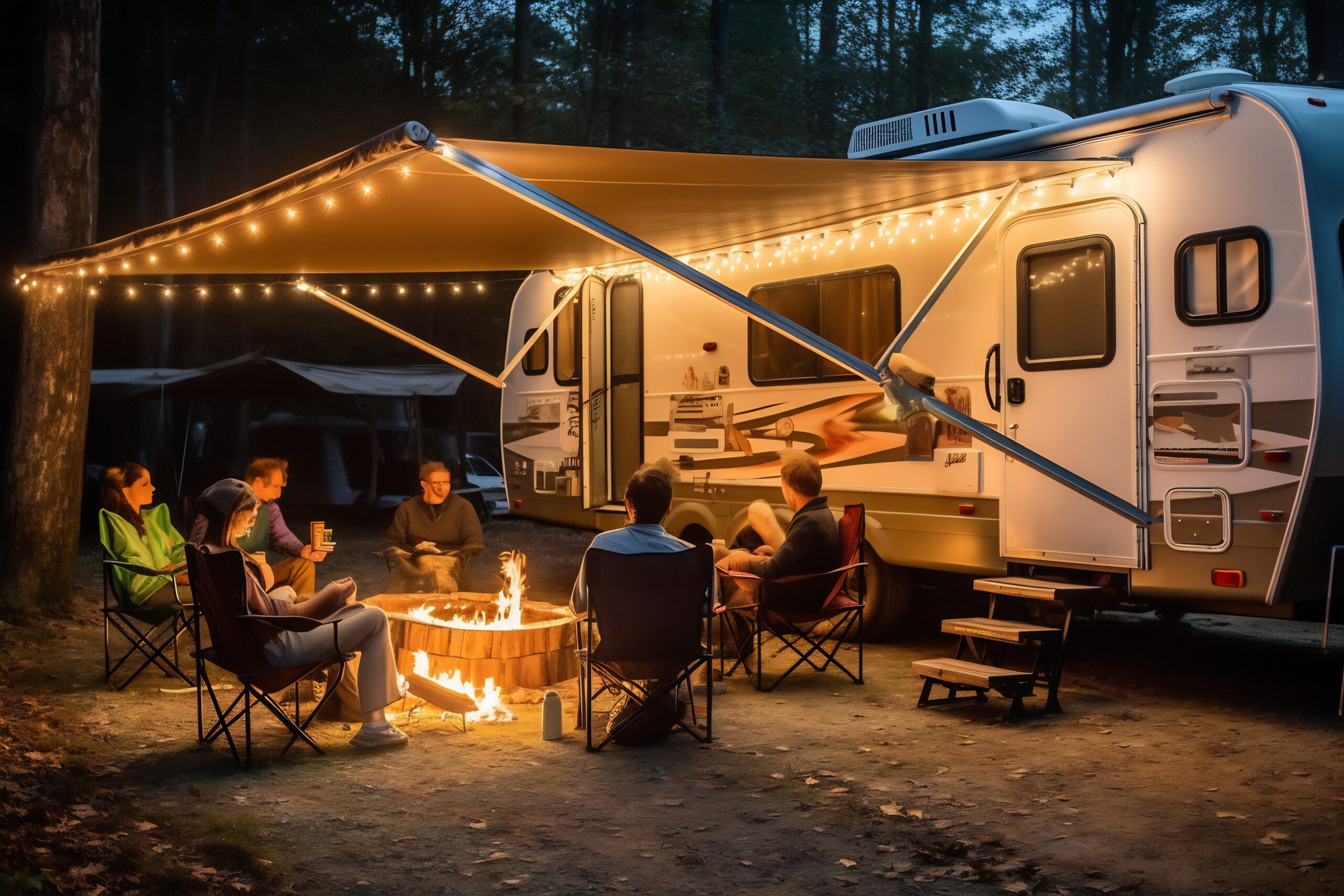With nighttime temperatures dipping into the 40s and 50s, and back to school shopping all but complete, it’s time to think about preparing the RV for the offseason. Whether you are extending your camping season another few weeks or planning to pack it all in and call it a year, you’ll need to complete a series of important tasks in order to remain comfortable (if you’re camping) and to keep your RV in top shape (if you’re winterizing).
If you’re camping in the fall…
There’s something special about camping in the fall. The changing landscape, the cool mornings, the reduction in crowds all contribute to this sense of wonder. It’s a great time of year to go hiking, kayaking, and leaf peeping (not to mention cider and fresh donuts).
To remain comfortable during this time of year when the weather and air temperatures are fluctuating, bring out the cool-weather clothes. Layers are the name of the game in the fall. Move the majority of your warm-weather clothes into storage or back in the closet at home. Make sure you have extra blankets and warmer sheets – flannel is a good choice – for hanging around and for sleeping.
Always check ahead that where you’re planning to camp is still open before making your way there. Most campgrounds, public and private, are open through October. Fewer remain open year-round in Michigan. Even if a campground is open, all amenities may not be available as during the regular season. Since it gets dark sooner than in the summer, time your arrival and any activities during your time there to take place when there is plenty of daylight.
You should know how to operate the heating system in the RV. Fill up propane tanks when you arrive at a new campground, check levels often, and supplement with electrical space heaters if necessary. You don’t want to wake in the middle of the night freezing cold. Speaking of freezing, we can have some cold snaps in the fall. This means it’s important to protect your RV’s water system. Know how to disconnect water lines and how to drain them in case the temperature is forecast to drop too low. Understand, however, that a campground may shut off the water supply as cold temperatures move in, which means you’ll need to pack drinking and cooking water. An RV skirt can help better protect the undercarriage of your RV and keep it on the warmer side, too.
If you’re winterizing the RV…
It’s essential to perform several tasks to ensure your RV is put away correctly so that the interior living space and all of the RV’s systems will remain livable and workable come next RV season.
You’ll need to empty all of the holding tanks – fresh, gray water, and black water. Michigan gets quite cold during the winter months and leaving water in the tanks will lead to freezing, resulting in cracked tanks or pipes. Flush any appliances, such as hot water tanks. Once you have drained all the water lines, it’s time to add RV-specific antifreeze to the plumbing to prevent pipes from freezing.
Another part of the winterization process is deep cleaning the interior. Empty the cupboards throughout the RV and remove items within, especially in the kitchen. Wipe down every surface with disinfectant and use a hand vacuum to reach tighter spaces to suck up crumbs and debris. It might be a good idea to store kitchen items in totes rather than keeping them on the shelves all winter. Remove linens and towels from mattresses and storage spaces; bring them inside for a thorough wash and possibly to store unless you’re storing them in airtight containers. Scrub the toilet, shower, and sink in the bathroom until they sparkle. Remove the shower curtain, which can be washed or replaced the following season. Vacuum all soft furnishings and any carpeted areas. Sweep and wet mop the floor last. The RV should smell and look practically brand new if you’ve done the job right.
Remove all food. Even non-perishable items. Deep clean any appliance – fridge, microwave – that stored perishable food and let them air out thoroughly to avoid their harboring mold or mildew over the months of storage.
Don’t neglect the exterior. Take the opportunity to check for any cracks or seals around windows and vents, clean and lubricate slideouts and jacks, and give the body of the RV one last scrub. While you’re cleaning, inspect for any damage such as rust, soft areas or bubbling that could indicate water damage. Try to take care of the problem now before winter sets in. If you can’t, take pictures of the spot for future reference and take care of it in the spring as soon as you bring the RV out of storage. Check that all windows and vents are shut and locked as well as all exterior storage compartments. Look at the RV’s tires for wear as well as to inflate them to the appropriate weight prior to storage; tire covers can help protect them from the elements. To deter pests from finding a cozy winter abode, block small holes or gaps with steel wool, wire mesh, or other type of fill. This is especially important around connection points with appliances, energy, or water.
Of course, your RV’s engine compartment and battery require some attention, too. If the RV won’t be used for an extended period of time, i.e., next spring, disconnect the battery and store it in a cool, dry place. Evaluate all fluid levels including brake fluid, transmission fluid, and coolant. Look at the engine’s belts and hoses, checking for cracks or signs of deterioration.

